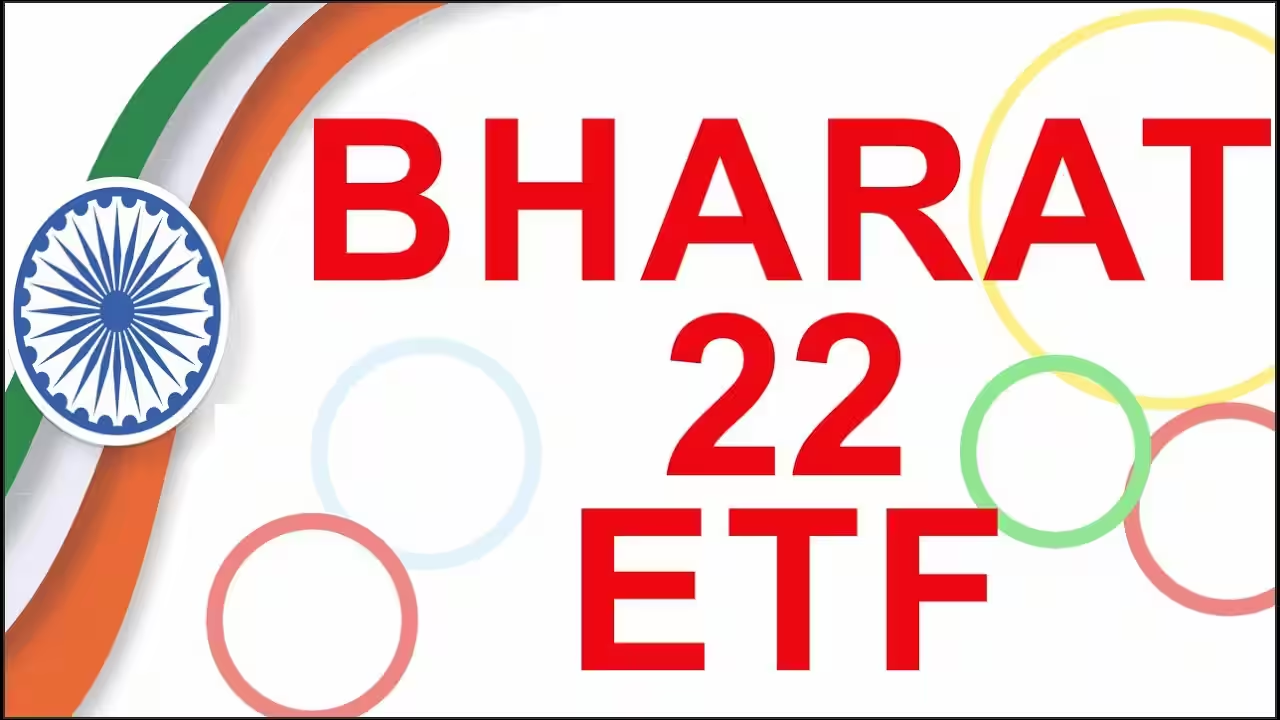The Bharat 22 Exchange-Traded Fund (ETF), launched by ICICI Prudential Asset Management Company, represents a significant opportunity for investors seeking exposure to a diversified portfolio of blue-chip stocks from various sectors in India. This article provides an in-depth review of the Bharat 22 ETF, covering its growth prospects, inherent risks, and overall investment appeal.
Overview of Bharat 22 ETF
Fund Objective and Structure
The Bharat 22 ETF aims to provide investors with returns that closely correspond to the performance of the Bharat 22 Index, which comprises 22 state-owned and quasi-government entities. The fund is designed to offer exposure to a diversified basket of stocks representing key sectors of the Indian economy, including public sector enterprises and government-backed companies.
- Index Composition:
- The Bharat 22 Index includes a mix of large-cap and mid-cap stocks from sectors such as finance, energy, utilities, and infrastructure. Key constituents include companies like State Bank of India, Bharat Petroleum Corporation Limited (BPCL), and Larsen & Toubro.
- Investment Strategy:
- The ETF tracks the performance of the Bharat 22 Index by investing in the same constituent stocks in the same proportion. This passive management approach aims to replicate the index’s performance with minimal tracking error.
Historical Performance and Growth Prospects
Historical Performance
- Performance Overview:
- Since its inception, the Bharat 22 ETF has demonstrated a strong performance track record. As of mid-2024, the ETF has delivered an average annual return of approximately 11%, reflecting the robust performance of its underlying index.
- Market Performance:
- The Bharat 22 ETF has benefited from the strong performance of Indian public sector enterprises, which have seen significant growth due to government initiatives and economic reforms. For instance, the fund’s performance has been positively impacted by the recovery in energy and financial sectors.
Growth Drivers
- Economic Reforms:
- The Indian government’s push for economic reforms, including privatization and infrastructure development, has created a favorable environment for public sector enterprises. These reforms are expected to drive growth in the sectors represented by the Bharat 22 ETF.
- Infrastructure Investment:
- The government’s focus on infrastructure development, including investments in roads, railways, and energy, supports the growth prospects of companies in the Bharat 22 Index. This sectoral boost is likely to enhance the performance of the ETF.
- Financial Sector Strength:
- As a significant component of the ETF, the financial sector’s recovery and growth prospects contribute positively to the fund’s performance. With the Indian economy on a growth trajectory, financial institutions are expected to benefit from increased lending and economic activity.
Risks and Challenges
Market Risks
- Sector Concentration:
- While the Bharat 22 ETF provides diversification across various sectors, it is heavily weighted towards public sector enterprises. This concentration can expose the fund to sector-specific risks, such as regulatory changes and economic slowdowns affecting state-owned companies.
- Economic Sensitivity:
- The performance of the Bharat 22 ETF is closely tied to the Indian economy’s performance. Economic downturns, political instability, or global market fluctuations can impact the ETF’s returns.
Operational Risks
- Tracking Error:
- As a passive fund, the Bharat 22 ETF aims to replicate the performance of the Bharat 22 Index. However, there is always a risk of tracking error, where the ETF’s performance may slightly deviate from the index due to factors such as management fees and market liquidity.
- Liquidity Risks:
- The liquidity of the ETF’s underlying stocks can affect its performance. Lower liquidity in certain stocks may lead to wider bid-ask spreads and impact the ETF’s trading efficiency.
Comparative Analysis
Bharat 22 ETF vs. Other Investment Vehicles
- Comparison with Index Funds:
- Compared to traditional index funds, the Bharat 22 ETF offers the advantage of intraday trading and lower tracking error. However, index funds might have lower expense ratios, which can be a consideration for long-term investors.
- Comparison with Mutual Funds:
- Mutual funds managed actively might provide higher returns due to selective stock picking and market timing. However, they come with higher management fees compared to ETFs, which typically have lower expense ratios.
Investor Considerations
Suitability for Different Investor Profiles
- Long-Term Investors:
- The Bharat 22 ETF is suitable for long-term investors looking for exposure to a diversified portfolio of Indian blue-chip stocks with a focus on state-owned enterprises. The ETF’s historical performance and growth prospects make it a viable option for investors seeking capital appreciation over time.
- Risk Tolerance:
- Investors should assess their risk tolerance before investing in the Bharat 22 ETF. While the ETF provides diversification, the inherent risks associated with sector concentration and economic sensitivity should be considered.
Investment Strategy
- Diversification:
- The Bharat 22 ETF offers diversification across multiple sectors and companies, which can help mitigate individual stock risk. Investors can use the ETF as part of a broader portfolio strategy to achieve balanced exposure to Indian equities.
- Cost Efficiency:
- The ETF’s lower expense ratio compared to actively managed funds makes it an attractive option for cost-conscious investors. The cost efficiency can contribute to higher net returns over time.
Conclusion
The Bharat 22 ETF by ICICI Prudential represents a promising investment vehicle for those seeking exposure to India’s public sector enterprises and key economic sectors. With a strong historical performance, favorable growth prospects driven by economic reforms and infrastructure investments, and a cost-efficient structure, the ETF offers several advantages.
However, investors should be mindful of the risks, including sector concentration, economic sensitivity, and potential tracking errors. Conducting thorough research, understanding personal risk tolerance, and consulting with financial advisors are essential steps before investing in the Bharat 22 ETF.
Disclaimer: This article is for informational purposes only and does not constitute financial advice. Investors should consider their own investment objectives and consult with a financial advisor before making investment decisions.





